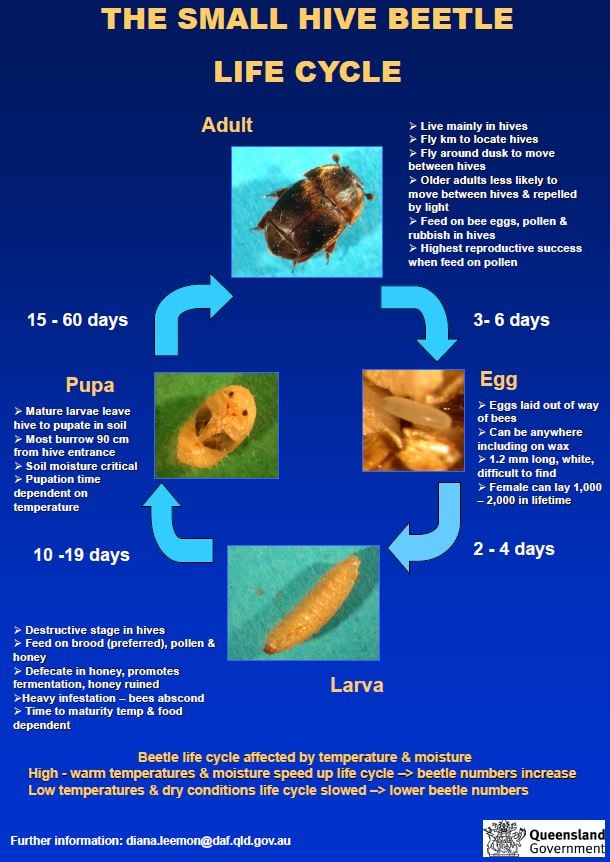Summer brings warmth, hopefully rain, flowers and with luck; lots of honey bee activity. Unfortunately for beekeepers in many areas of Australia it also means lots of Small Hive Beetle (SHB) activity.
The life cycle of SHB involves adult beetles moving into hives where they will feed on hive debris, pollen and some honey. They lay eggs (1mm, translucent, white) out of the way of bees in crevices and crannies within a hive. The eggs hatch to the larval stage (grub or maggot) which is the damaging stage. The larvae need to feed on protein to grow and develop. They get this protein mostly from pollen stores or bee larvae. They will also get energy by feeding on honey. When fully fed and developed, the larvae leave the hive during the night to burrow into the soil to pupate. Through pupation, larvae complete their life cycle by changing into adults. See the full diagram of the SHB life cycle below.
SHB life cycle diagram

If the number of SHB in a hive has built up and there is hot humid weather after rain, then the hive risks being overrun with SHB larvae leading to the destruction of the hive and a slimy fermenting mess crawling with masses of SHB larvae. Similarly, if a hive goes queen-less or becomes very weak and stressed it is at risk from SHB destruction. Keeping the numbers of adult SHB down is critical, and regular inspections to catch the beginning of a build up in SHB larval numbers within a hive is critical. Some management strategies throughout the year are provided along with a list of control options.
One thing I have been trialling this summer is the external attractant trap, mostly to gather information on the movement of SHB throughout the season. In five months from the beginning of September 2018 to the end of January 2019, I trapped 5,140 SHB with my external attractant traps. This number has surprised me as during this time the weather in my area has mostly been very hot and dry with maximum daily temperatures between 30°c and 38°C and only 202.5 mm of rain. I check my traps daily and keep the yeast fermentation in the trap fresh by adding a tablespoon of honey each day and totally replacing the mixture about twice a week. The traps furthest from the hives seem to trap the most SHB. The traps work by intercepting SHB following the odour trail to honey bee hives. A video explaining the trap can be seen below.
About the author Diana Leemon


